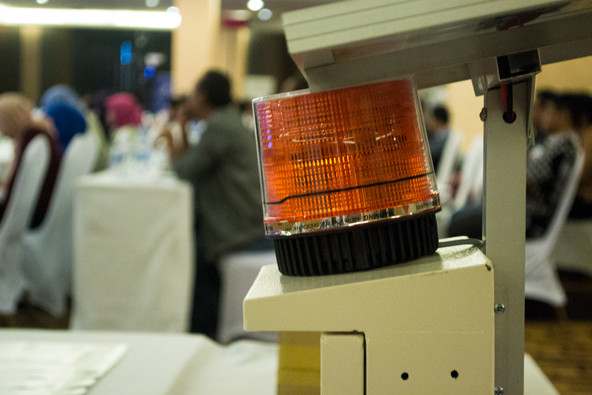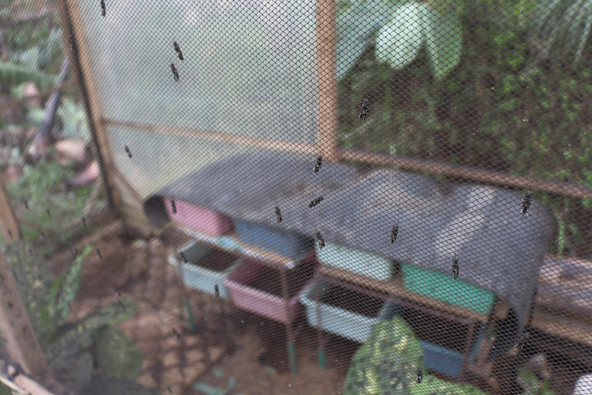Over the last 30 years, members of our organization, the International Federation of Red Cross and Red Crescent Societies (IFRC), have typically organized their community work around participatory appraisal processes designed to engage communities in identifying their own needs and facilitating the development of tailor-made solutions to address them. Overall, these processes have been hugely successful, especially in mobilizing communities to take collective action. However, as the effects of climate change, urbanization, and greater exposure to hazards increase community needs, we believe humanitarian organizations like ours need new approaches that complement and bolster traditional ones.
We wondered: Are there opportunities to build on the more oblique, non-conventional solutions people in crisis-affected communities are already using to strengthen their own resilience? How can we better identify these solutions, work with local partners to develop them, and support their diffusion where appropriate?
To help answer these questions, we started in Indonesia. A group of interested partners—including the Indonesian Red Cross, Zurich Insurance, the Global Disaster Preparedness Center, the Humanitarian Leadership Academy and Pulse Lab Jakarta— came together to discuss how they could best support to local innovators. We ultimately settled on implementing two distinct methodologies in parallel (thanks also to the support of the Elrha's Humanitarian Innovation Fund).
The first methodology was a local innovation challenge for improving resilience to floods. We felt this approach would be easy to implement and allow us to reach a broader constituency of potential innovators. The local Red Cross also had strong interest in trying it out.
Are you enjoying this article? Read more like this, plus SSIR's full archive of content, when you subscribe.
The second methodology we tested was the lead user method, a research-based approach used by the private sector to identify new products and services. Lead users (or user innovators) are individuals already innovating to improve existing products, typically because those products do not meet their needs. To our knowledge, the humanitarian or development sectors had never applied this approach—at least in its more classic formulation by MIT’s Eric von Hippel (though it is akin to approaches such as positive deviance and jugaad). Unlike a challenge, the lead user method focuses exclusively on already existing, homegrown solutions developed in the context of a particular need.
Comparing results from the two approaches would help us determine which strategy was most effective in unearthing non-obvious solutions with greater potential for impact and sustainability. From there, we planned to provide support for developing the solutions, integrating them into our programs, and scaling them via dissemination.
The local innovation challenge
The challenges with challenges are well documented, and we were determined to avoid the most common pitfalls. Specifically, we tried to keep the initial time investment by innovators low, sought to avoid a winner-takes-all approach, and built in support for promising innovations post-challenge.
We developed a simple application procedure, published it on the Indonesian Red Cross’s website, and circulated the announcement via social media. By the end of the two-month application window, we received 60 submissions—not as many as we hoped, but respectable for a first attempt.
After reviewing the applications, we realized our challenge question was overly broad. As a result, some submissions were much more relevant than others; they included backpacks that doubled as life preservers, filtering systems for removing heavy metals from rivers, and mobile geoengineering plants designed to disperse rainclouds. While we saw value in casting a wide net to encourage solutions from adjacent fields, it meant we received a lot of off-the-mark proposals.
 A flood early-warning system consisting of water level sensors, solar cells, batteries and sirens. (Photo by Carlos Álvarez)
A flood early-warning system consisting of water level sensors, solar cells, batteries and sirens. (Photo by Carlos Álvarez)
We invited nine innovators to attend a pitch event with partners and local investors as judges, and provided some basic coaching and support for developing presentations. In the end, we decided to offer financial support to all nine, but rather than cash prizes, we provided grant funding, which has ensured that the IFRC, Indonesian Red Cross and the challenge winners continue to engage.
The lead user method
The lead user methodology is labor intensive, and requires good analytical and research skills to manage properly. Its success relies on interviewing subject matter experts to flesh out the different facets of an issue (such as the relation of floods to waste), and then using their referrals to identify other experts, who in turn make referrals to other experts. During this referral and interview process, the lead users usually emerge.
To carry out the work, we partnered with the Hamburg University of Technology Institute for Technology and Innovation Management, a global leader in applying the lead user approach. Over the course of four months, two researchers sent introductory emails to 210 experts in the field of flood resilience. They received 116 responses, which led to 48 phone and in-person interviews and 68 email conversations with experts. With this background, the researchers then conducted fieldwork in Indonesia.
 Made Kusuma started his sustainable farm in Gunung Kangin, Bali. The Black Soldier Fly reduces organic waste up to 60-80 percent and makes for high-protein animal feed. (Photo by Moritz Göldner)
Made Kusuma started his sustainable farm in Gunung Kangin, Bali. The Black Soldier Fly reduces organic waste up to 60-80 percent and makes for high-protein animal feed. (Photo by Moritz Göldner)
Ultimately, we identified 25 lead user innovations, including using black soldier flies to process organic waste that then serves as livestock feed; tools like ecofunopoly, a board game designed to raise educational awareness; and a garbage for health insurance service and business model. Unlike the innovations that emerged from the challenge, these innovations were already in use.
Two approaches, two types of innovations
So how did the two methods compare, and what lessons can we draw for organizations interested in fostering grassroots innovation?
- On process side, testing two different methodologies in parallel proved too demanding. For the Indonesian Red Cross, the more exciting, public profile challenge became a higher priority than the more academic, labor-intensive lead user process. So while we did gain deeper insights by comparing and contrasting two approaches, the issue of capacity will be at the forefront when we utilize this approach in the future.
- People who have a specific need develop lead user innovations in the context where the need arose. Challenges, by contrast, often solicit ideas and prototypes from people who are far away from the immediate need and context, but think their solution might apply. Innovators’ motivations and appetites for diffusion are different. Overall, we found that lead user innovations were more relevant—having the significant advantage of already being field-tested and—and ready to scale (in the sense of market testing). The same cannot be said for the solutions the challenge surfaced. In a sense, therefore, we respond to social entrepreneur Ken Bank’s call for a “fixing development challenge” to compare the impact of bottom-up with externally driven solutions—or at least shed some light on the eternal dilemma facing humanitarian organizations on locally driven vs. externally sourced solutions.
- If you held a brainstorming session with a group of flood experts, it is unlikely they would come up with a solution like using black soldier flies to reduce organic waste (which reduces the blocking of drains and river beds that contribute to flooding). Here again, we found that the lead user process tends to explore the solution space more extensively than a challenge. Reinforcing this, there was no overlap between the innovations identified through the two processes (though theoretically a lead user innovator could have applied for the challenge). Endless local adaptations across a country the size of Indonesia allow for chance encounters between needs and solvers from less obvious backgrounds; in the case of the flies, an eco-farmer, not a water engineer, came up with the solution.
- The lead user process is iterative and allows for continuous refinement of the search for solutions. By contrast, the challenge (at least how we implemented it) included a one-time call for proposals with little two-way communication with innovators. As a result, the challenge methodology was less targeted and did not allow much room for adaptation.
What’s next?
Hamburg University is about to bring academic rigor to these impressions. It will conduct a blind trial with innovation experts to compare the results of the two processes in terms of novelty, sustainability, and relevance. We hope the results will encourage a debate around the best approaches to foster locally driven innovation.
Support SSIR’s coverage of cross-sector solutions to global challenges.
Help us further the reach of innovative ideas. Donate today.
Read more stories by Nathan Cooper, Shaun Hazeldine & Giulio Quaggiotto.

